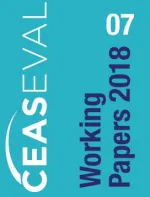The future of the CEAS – an analysis of rules on allocation

CEASEVAL Working Paper No. 7
This paper analyzes the various proposals for reform of the Common European Asylum System by the Commission and the European Parliament, through the lens of the rules allocation. Set-up and objectives of the proposals for reform of the Dublin system are discussed, taking into account the implications of proposals for reform of the rules on qualification, procedures and reception and choices as regards centralization, harmonization and some regionalization and externalization issues. It analyzes how the Dublin system allocates responsibility for illegally staying third country nationals and in fact international protection beneficiaries next to applicants, without a clear Treaty basis. The Commission proposals maintain by and large the current set-up of the Common European Asylum System, and aim to let the allocation system work mainly by introducing punitive measures for applicants who do not stay in the assigned member state, and harmonization of rules on qualification, procedures and reception conditions. Uniformity however can arguably not be achieved for several reasons, such as socio-economic differences between member states, lack of EU competencies, because the subject matter resists exhaustive regulation and because a common appeal body has not been introduced. The EP proposal on the other hand opts for a new system, aimed at fair sharing and introducing a centralized allocation and transfer system. Like the Commission proposals, it is ultimately based on forced distribution.